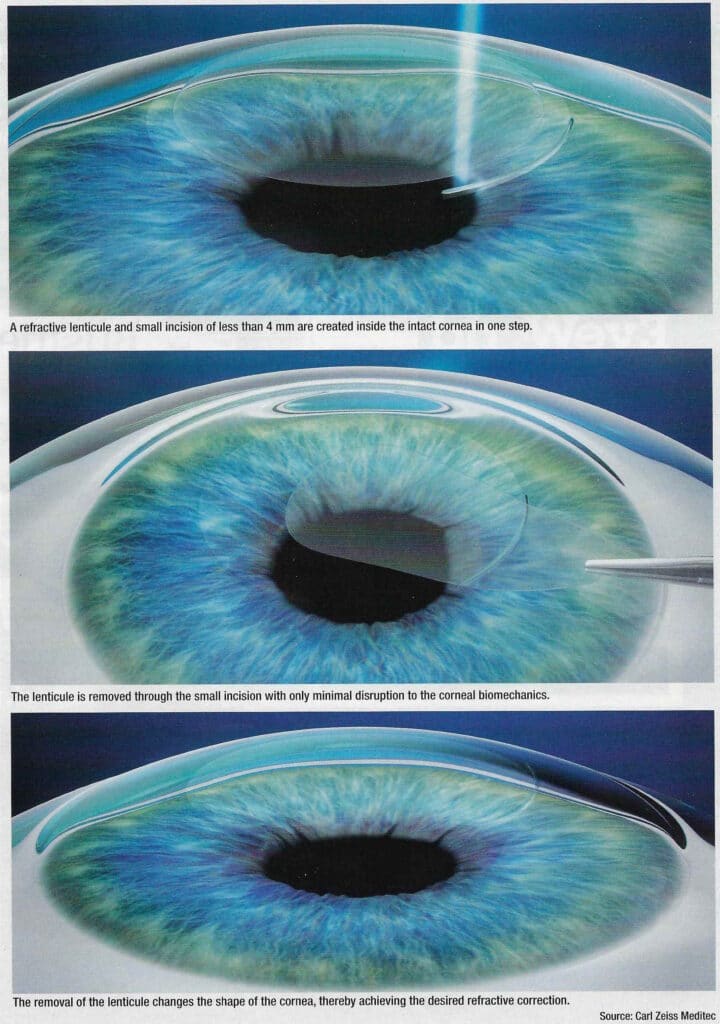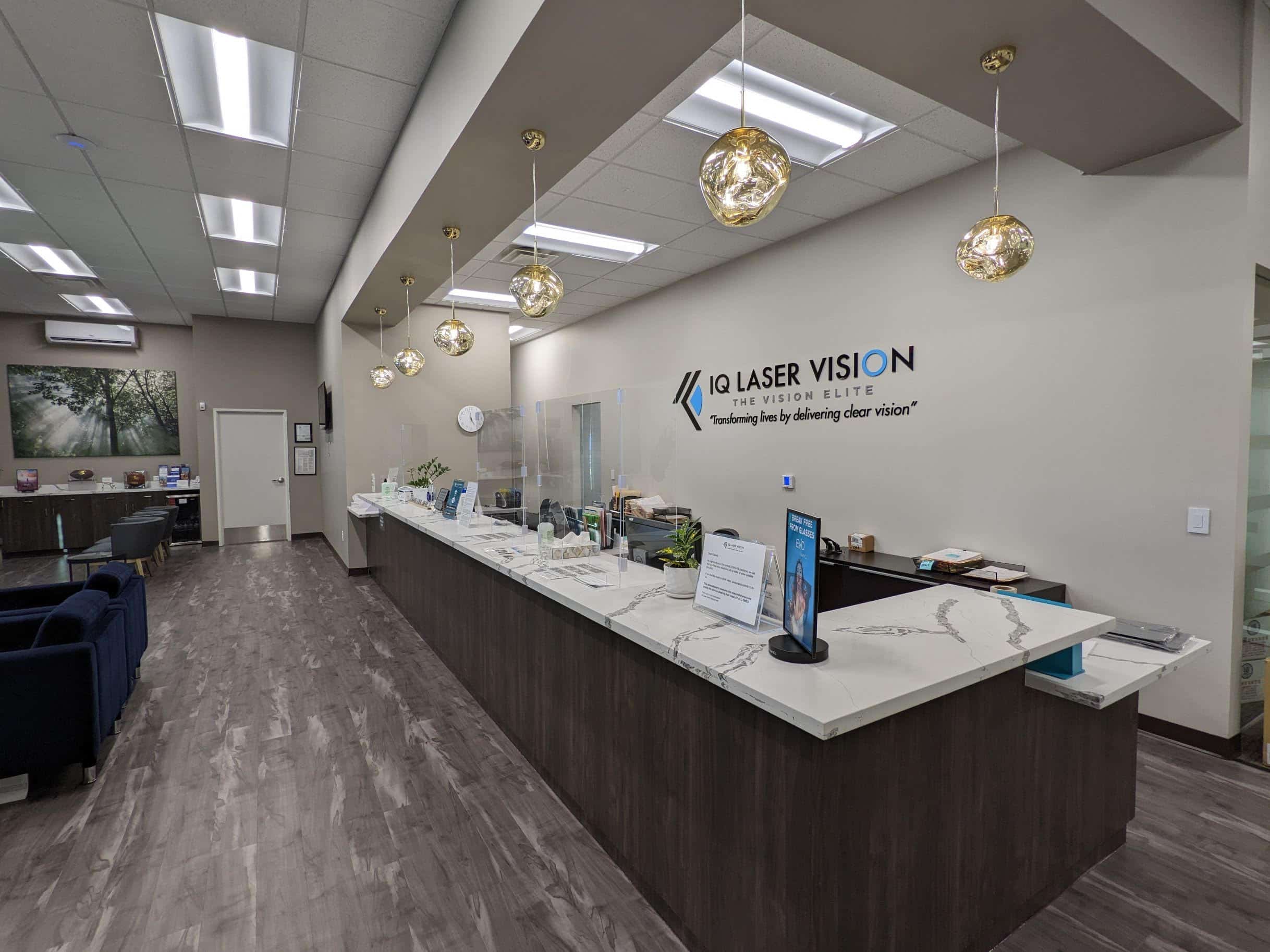It’s not unusual to feel uncomfortable with the idea of a laser vision correction procedure. After all, this is a procedure that involves your eyes and how you see the world around you.
It may also make it harder to give a procedure like SMILE a chance because many myths surround it and other vision correction procedures like LASIK. The question becomes, what’s true when it comes to SMILE?
Are any of the myths surrounding this procedure worth knowing? Keep reading to learn about 7 myths about SMILE and what they really mean!
1. SMILE Laser Eye Surgery is an Effective Form of Vision Correction

Did you know that SMILE has been FDA-approved since 2016? Think again if you believe that SMILE is a new procedure without data to back it up.
SMILE is as effective and safe as LASIK. Multiple studies have examined SMILE refractive surgery and found it safe and useful to correct nearsightedness and astigmatism.
There are always new advancements being made in refractive surgery technology. With SMILE, you can rest assured that you will end up with the clear, beautiful vision you’ve always dreamed of.
SMILE is a minimally invasive procedure that allows you to get back to your everyday activities in no time. After correcting your vision with SMILE, you’ll be able to return to these tasks the next day.
The advantage, of course, is that with SMILE, you’ll have better vision than you ever had when you wore glasses or contact lenses. It’s also better suited for people who may not qualify for LASIK due to dry eyes or thinner corneas.
2. You’ll Still Need Glasses After SMILE

There is no guarantee that you’ll no longer need glasses after SMILE. However, most patients who get SMILE achieve true visual freedom from glasses and contact lenses.
Imagine how much better your life could be by reducing or eliminating your dependence on glasses! SMILE, in particular, is best suited to people with more active lifestyles.
If you’ve ever tried to swim while wearing glasses or even running with them, you know how challenging it can be. Working out with glasses means constantly pushing them up while you’re sweating.
When you’re trying to get in the zone, the last thing you want to deal with is your constantly sliding glasses. But after SMILE, you can look forward to visual freedom without boundaries.
This freedom makes soccer games, sailing on the ocean, and even playing with your dog easier. This could be your new reality if you’re a good SMILE candidate.
It is important to note that SMILE can only treat current refractive errors, including nearsightedness and astigmatism. It cannot treat eye conditions like cataracts or presbyopia, meaning you may need reading glasses when you’re older.
But the advantage of getting SMILE is that you can look forward to decades of crisp, clear vision, and that’s a big deal.
3. You Could End Up Blind After Having SMILE
Like many other myths about SMILE, this is false. There is no way you’ll end up blind after undergoing the procedure.
SMILE has an excellent safety record. There are always risks and the chance for complications after any surgical procedure, including SMILE.
But going blind is not one of them. Part of the reason why SMILE is so safe is that you have to qualify for it before undergoing it.
You’ll undergo a consultation before you can have SMILE at IQ Laser Vision. You may be a good SMILE candidate if the following apply:
- You’re at least 18 years old
- You’re nearsighted, have astigmatism, or both
- You have healthy eyes, especially corneas
- You are in good health
- Your prescription is stable and hasn’t changed in at least a year
If you qualify for SMILE, your eye doctor will go over instructions to follow. Before having SMILE, you’ll need to stop wearing hard contact lenses at least four weeks in advance and stop wearing soft contacts two weeks before the procedure.
You may not realize it, but wearing contact lenses can temporarily change your cornea’s shape. Not wearing contacts before SMILE will ensure that your cornea is the right shape to have the absolute best results.
4. SMILE is Painful

It may sound like a vision correction procedure that reshapes your cornea would be painful, but it’s not. How is this possible?
You’ll receive numbing eye drops before your SMILE procedure at IQ Laser Vision ever begins. These eye drops are an anesthetic that numbs the nerves in your eye.
Numbing these nerves ensures that you’ll never feel any pain while you have SMILE. Once the drops move over the surface of your eye, your SMILE surgeon can begin the procedure.
SMILE only takes 10-15 minutes to complete from start to finish. Reshaping your cornea with a laser takes about 30 seconds and never involves any pain.
You may feel slight pressure at most as your eyes are held open with an eyelid holder, but it only lasts for a short time and is never painful. Unlike other procedures like LASIK, SMILE doesn’t involve creating a flap in the cornea.
Instead, your surgeon will create a lens-shaped piece of tissue (a lenticule) inside the cornea to reshape it. After creating the lenticule, they will make a tiny incision that’s less than 4 millimeters on the surface of your eye.
After this incision, your surgeon will make a small opening in the cornea and pull out the lenticule through the incision. Pulling out the lenticule reshapes the cornea and gives you the vision you’ve always wanted.
Once SMILE is over, your eyes will start adjusting to their new normal. The recovery is quite short, meaning you don’t have to worry about spending days in bed after having SMILE.
5. Having SMILE Means There’s a Long Recovery
As a minimally invasive procedure, SMILE only causes minimal discomfort during recovery. Like any surgical procedure, you’ll need to leave some time for healing, but it’s nothing unreasonable.

In the days after SMILE, your vision and ability to see will only get better. You may feel some slight discomfort when you get home after SMILE, but it shouldn’t cause you any pain.
On the day that you have SMILE, the best thing you can do is go home, relax, and rest. Have a friend or family member drive you home. You may notice that your vision has already started improving.
Most SMILE patients find that their vision stabilizes within a week of undergoing the procedure. Most also have no problem returning to activities like driving, playing sports, working, and wearing makeup a few days after SMILE.
6. My Prescription is Too Severe To Treat with SMILE
SMILE is only FDA-approved for patients with astigmatism, nearsightedness, or a combination of the two. If you’re farsighted, SMILE is not suitable for you, and you may be a better candidate for another procedure like PRK.
If you’re nearsighted and have astigmatism, there are limits to what SMILE can correct. You need to have a prescription between -1 and -10 diopters for nearsightedness.
For astigmatism, SMILE can correct up to 3 diopters. If you don’t fit these treatment criteria, IQ Laser Vision also offers a procedure called Micro-SMILE.
Micro-SMILE is a proprietary technique you’ll only find offered by IQ Laser Vision. If you don’t qualify for SMILE, Micro-SMILE can treat higher ranges in prescription from -7 to 10 diopters.
Micro-SMILE may be worth considering if you have a higher prescription, dry eyes, or thinner than normal corneas.
7. The Results of SMILE Aren’t Permanent, and I’ll Need a Touch-Up Procedure

Say what you want about SMILE, but it is a permanent procedure. You need to understand that it only treats current refractive errors, including astigmatism and nearsightedness.
SMILE is permanent because it involves reshaping the cornea. However, people get confused because they think that having something like SMILE or LASIK means their vision will never change again.
This is false because even if you correct your vision, you’ll still have cataracts and presbyopia when you’re older. Besides this, you may need an enhancement procedure after SMILE, but it is highly uncommon. SMILE patients are less likely to need touch-up procedures because the cornea doesn’t become as dehydrated when compared to LASIK.
If you’re curious about exploring whether SMILE laser eye surgery is a good option for you, reach out to IQ Laser Vision, the #1 SMILE Laser Vision Correction with locations in California and Houston, TX, for a free consultation!























